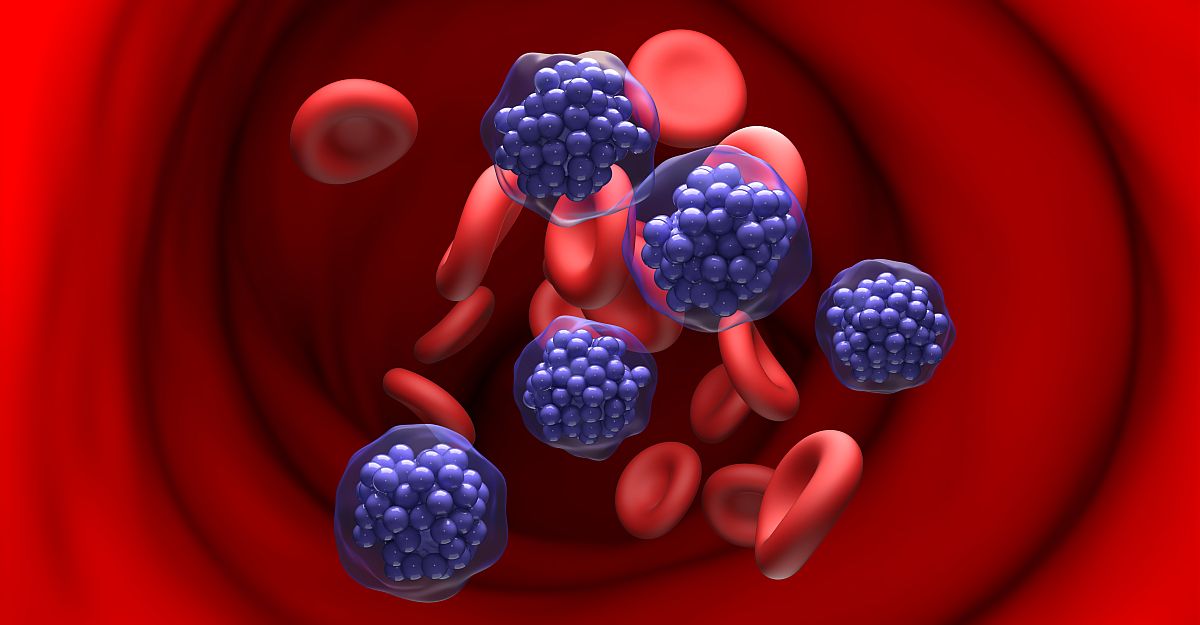Identification of oncogenic mutations in diffuse large B-cell lymphoma (DLBCL) has led to development of multiple drugs that target specific survival pathways. These treatments can be curative, but patients with early relapsed or refractory disease continue to have poor outcomes. Dr Christopher Melani and colleagues hypothesized that targeting multiple survival pathways simultaneously with combination targeted therapy may be curative in patients with relapsed or refractory DLBCL. In their phase II trial, patients with relapsed or refractory DLBCL received a regimen of 5 drugs: venetoclax, ibrutinib, prednisone, obinutuzumab, and lenalidomide (ViPOR). Treatment was administered every 21 days for 6 cycles until disease progression or unacceptable toxicity. To optimize synergy while minimizing adverse effects, the agents were administered in noncontinuous cycles for a fixed duration. Patients had received a median of 3 previous systemic therapies, including 40% who had received previous chimeric antigen receptor (CAR) T-cell therapy.
Of 48 evaluable patients, responses were seen in 54% and 38% had a complete response. Median time to response was less than 1 month, and 2-year response duration was 65% overall, including 78% of patients with complete responses and 38% of patients with partial responses. Timing of treatment impacted response; patients who received ViPOR as second-line therapy had longer progression-free survival than those who received it in the third line or later. Of those previously treated with CAR T-cell therapy, 30% had progression-free survival at 2 years. At baseline, 90% of patients had detectable circulating tumor (ct)DNA levels; these levels decreased rapidly after receiving ViPOR, with 33% of all patients and 93% of those with positron emission tomography-confirmed complete response having undetectable ctDNA at the end of therapy.
Adverse events frequently resolved during the off-treatment week. Hematologic adverse events and hypokalemia were the most common adverse events, each occurring in more than two-thirds of patients and resulting in dose reductions and delays in 17% and 25% of patients, respectively. Pharmacokinetic analyses indicated no clinically significant drug interactions.
High level
This study showed that combination targeted therapy with ViPOR could be administered safely in adult patients with relapsed or refractory DLBCL, including those heavily pretreated with chemotherapy or CAR T-cell therapy. While ViPOR is potentially curative in some subtypes of relapsed or refractory DLBCL, it was not curative in germinal center B-cell (GCB) DLBCL not otherwise specified, suggesting a continued need for agents targeting GCB-specific pathways; thus more research is needed.
Ground level
In light of this research, combination targeted therapy may be appropriate for adult patients with relapsed or refractory DLBCL, even those heavily pretreated with chemotherapy or CAR T-cell therapy. Higher percentages of complete responses and longer progression-free survival when administered as second-line therapy suggest that ViPOR should be considered early in the treatment of patients with relapsed or refractory DLBCL.

